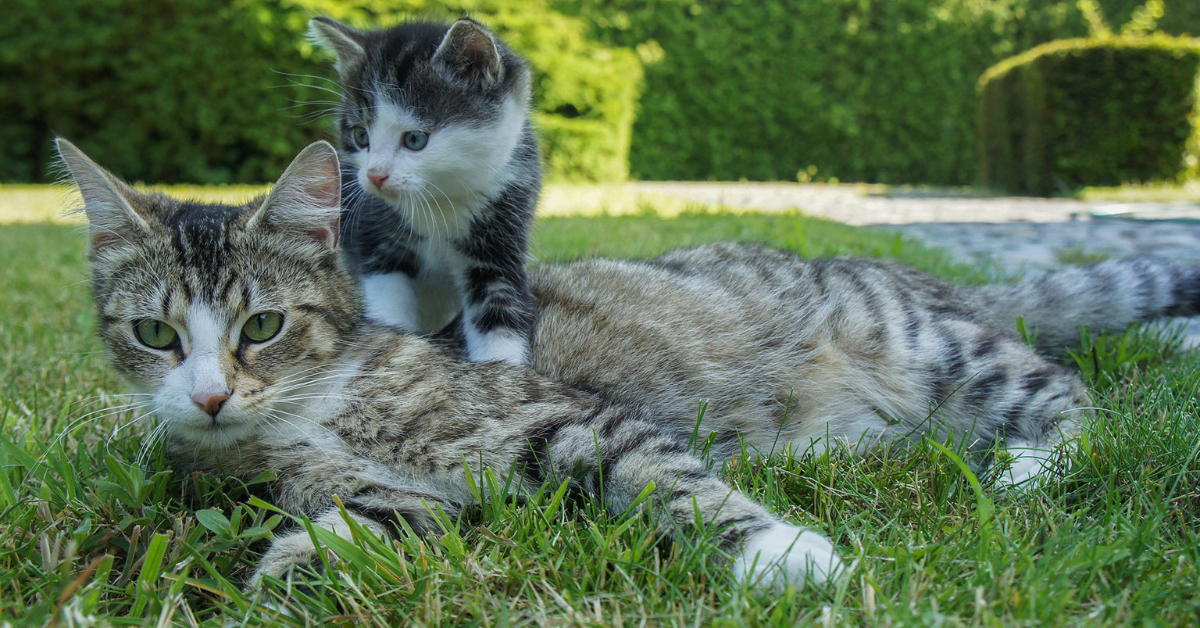Female Cats have some distinct characteristics and traits that are unique to gender. Female domestic cats are fascinating creatures, and there are many interesting facts about them that many people may not know. From their unique biology to their behavior and socialization, here are 12 interesting facts about female domestic cats.
12 Interesting Facts about Female Cats
#1) Female cats have a unique reproductive system that allows them to mate with multiple males during a single estrus cycle. This is known as polyestrous behavior and is what allows female cats to have multiple litters of kittens with different fathers. A litter of kittens can be from more than one father as a female cats eggs can be fertilized by more than one male. The female cat releases multiple eggs over the course of a few days when she is in heat any may mate with more than one male. Queens can have between one and nine kittens in a litter (although typically there are between four and six kittens per litter). Female cats may mate with more than one male to produce a litter, which explain why their kittens can be such a range of colors and different traits.
#4) The most popular female cat name in 2021 is Bella. This name is of Italian origin that means “Beautiful, God Is My Oath”. “Belle” also means beautiful in French and “Bella” is also known for being a nickname to Isabella, Annabella or Arabella. Here are some “Bella” candidate kittens.
#8) Pregnancy for a cat is much shorter than the time of a human pregnancy, around just 66 days (just over 2 months for a cat versus 9 months for a human). A female cat can get pregnant again just six weeks after giving birth.
#9) Female cats on average live longer than male cats. This is because they are less likely to engage in risky behaviors, such as fighting with other cats, that can lead to injury and illness. The World Oldest cat ever was a female and the current oldest living cat is a female. The oldest cat on record was a female cat named “Creme Puff”, who lived to be 38 years and 3 days old in Austin, Texas.
#10) Female cats will tend to be more nurturing and caring to kittens. Female cats have maternal instincts. They are also less tolerant in changes to schedule and have more of a homing instinct. Female cats will stick together in colonies and will bond together to help raise kittens. Female cats are generally more social than male cats and are more likely to seek out human interaction. They are also more likely to engage in play and grooming behavior with other cats.
#12) Female cats in most cat breeds are on average smaller than male cats. The size and average weight range for female cats always tends to be smaller across all cat breeds. Male cats are typically larger than females, especially if they were not neutered until after sexual maturity. Larger male cats are also true for wild cat breeds (lions, tigers, etc.).
Many other cat traits and characteristics will be shaped by how they were raised as kittens and have nothing to do with gender. For example, wild cats and rescues that started out as feral cats may be less trusting. Kittens that were raised in a caring environment and socialized with humans at a young age will tend to be more trusting and less skeptical of humans. Although the majority of non-neutered and non-spayed male and female cats have very distinctive behaviors, there is no consensus that all cats of either sex act a certain way. A cat’s personality is shaped by their individual genetic background and their past experiences in life in addition to their gender which makes every cat unique.
Related article: 12 Interesting Facts about Male Domestic Cats
In conclusion, female domestic cats are fascinating creatures with unique biology, behavior, and socialization patterns. Understanding these facts can help cat owners better understand and care for their furry feline friends. Let us know in the comments if you have a gender preference in domestic cats. For entertaining and educational cat videos, “subscribe” to our CatFancast Channel on YouTube.
